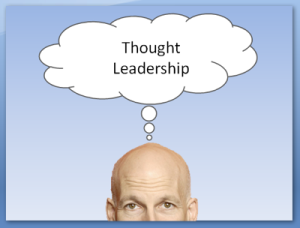Marketing Darwinism caught up with Kathy Visser-May, CMO of Acumatica, the world’s fastest growing Cloud ERP company. Kathy is a celebrated Marketer with experience traversing technology giants like Microsoft and PeopleSoft/Oracle and hyper-growth companies like Acumatica. Recently, she was named a CRN 2018 Woman in the Channel.
MD: Kathy, tell us a bit about Acumatica. We hear about the torrid growth. Any color you can add?
Kathy: Thanks Paul. Acumatica is focused on helping mid-size companies transform their business with a modern system that grows as they grow. The most forward-thinking companies are disrupting themselves to ensure they continue to be the architects of their future. This trend is affecting all industries, it doesn’t matter if you build buildings, manufacture auto parts, sell shoes online; disruption is happening, requiring companies to change how they operate and provide value to customers. As a result, the requirements of a mid market business to be competitive today are as complex as large enterprises were 10 years ago.
We have built a flexible, powerful, and secure platform that offers them speed and scale and connects their business in an end-to-end way. The growth is testament to the quality of the product and our unique licensing and deployment models that enable customers to scale as their business grows.
MD: You emphasize the Channel a great deal at Acumatica. Is it true that you are a 100%- Through-Channel company?
Kathy: For us, the Channel is our lifeblood. These amazing companies sell to and service customers with a deep understanding of their business needs across many industries and geographies. I like to say we don’t compete with our channel, we feed it. My team spends 50%+ of our resources and marketing dollars on creating high quality sales leads for our partners. Partners tell me all the time one of the reasons, in addition to our modern, cloud solution, they love selling Acumatica is because of our commitment to this model. We provide the Channel not only with technical knowledge but sales and implementation support as well. Such harmony is unheard of typically. So, yes, we are 100% Channel.
MD: You mentioned Digital Transformation. What does this mean specifically in the Acumatica context?
Kathy: We love the phrase Digital Transformation but are also aware of its shortcomings. For many businesses, the phrase implies something arcane and something “other” than what they are doing. But when you inspect the issue, ask the right questions, and find out that these very organizations are migrating to the cloud, digitizing process, and unifying Business and IT, you realize that they are in fact doing Digital Transformation. In our conception, it’s about two things: Operations and Customer Experience. We help Medium-sized companies operate in a manner that allows them to spend their energies engaging with customers and conferring that constantly-improving experience that their rightfully demanding customers ask for. The core concept of the DX journey is that the system at the center of the business must be one that is capable of housing the data needed across the business operations and the ability to provide real-time data and connection across all systems. Systems that house islands of data that have to be synchronized and reconciled are no longer effective in the modern world.
MD: ERP can at times seem “old hat.” What about emerging technologies?
Kathy: There are a few things embedded in this question. For some, the idea of ERP might seem to be yesterday’s news but for growing companies seeking to improve their engagement and experience, ERP can very well be a fresh and new way to approach their business. We are adaptable, flexible, and natively Cloud-based not cumbersome and laborious to implement. Interestingly, emerging technologies, especially AI, are a core pillar of our business. 75% of our resources are technical and we never have and never will stop engineering new products that transform how businesses operate and deliver value to customers.











